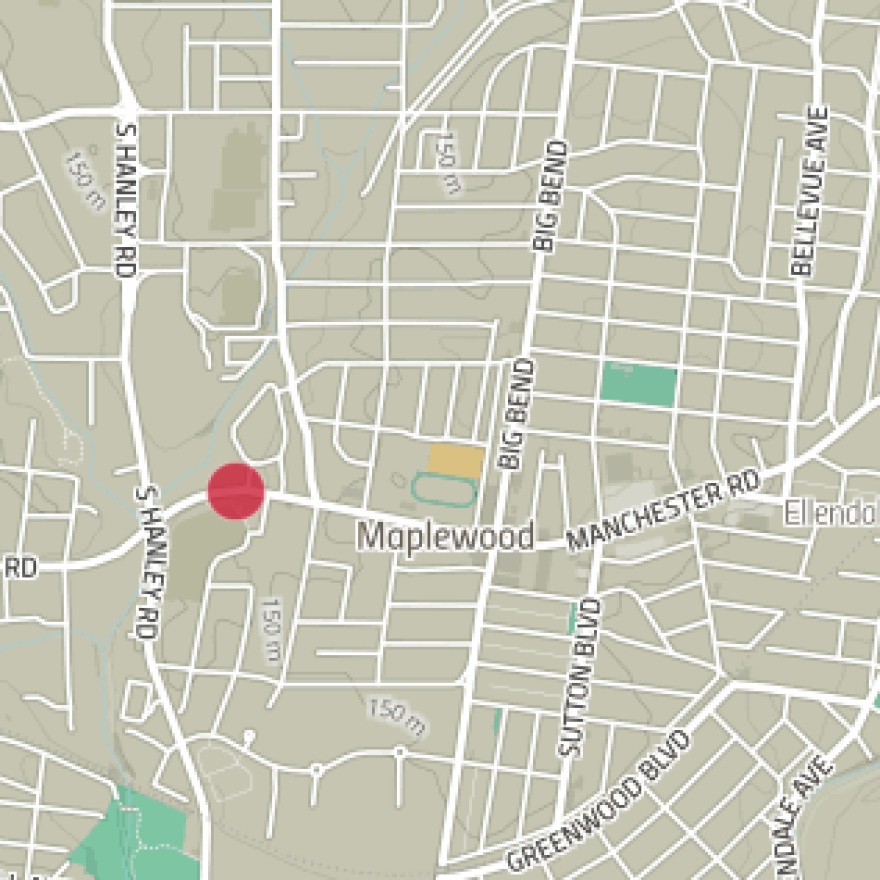Rick Jackoway recently moved back to St. Louis after 26 years away. When he drove under a sign on the MetroLink overpass on Manchester Road he thought, “Well, you don’t see that every day!”
So he asked our new Curious Louis project:
“Are other people curious like me? Has this been done in other places around the country, or just Maplewood?” Jackoway elaborated when we talked.
I called Maplewood City Hall and found out the creation is indeed unique. But it isn’t just a sign, originally had nothing to do with the city’s name and wasn’t even commissioned by the municipality but by MetroLink’s Arts in Transit project.
The organization put out a call for ideas in 2006 and Brooklyn artist Janet Zweig answered. She paid a visit to the city of approximately 8,000 residents to get some ideas.
“People had lived there for generations and there were a lot of little family homes,” Zweig said. “But then younger people were moving in because it’s a good, inexpensive place to live.”
‘Backward into the future’

The dichotomy made Zweig think of communications prophet Marshall McLuhan(who famously said in 1964, “The medium is the message.”) But it was another of McLuhan’s quotes that struck her: “We look at the present through a rear view mirror. We march backward into the future.”
With that in mind, Zweig noticed a couple of boarded-up houses, set for demolition.
“I had this idea of making this signage out of these houses to make this 'past' and 'future' of Maplewood real and concrete,” Zweig said.

Zweig envisioned the word “Maplewood” spelled out properly, left to right, as drivers headed east on Manchester into the city, and flipped backward as they drove west. In the backward version, the brick, tile and doorknobs would remain worn, recalling the old days. Letters on the forward side would be made of new or refinished materials, showing the way ahead. Both would be illuminated at night.
She completed and installed the project in 2007, thinking, "people would find it delightful and funny."

But not everyone understood it, according to Maplewood’s community development director Rachelle L’Ecuyer. While it was being installed, L'Ecuyer took calls from confused residents.
“They would say things like, ‘Hey, I just drove on Manchester. I think the guys’s got the letters on the sign backward,’” L’Ecuyer remembered.

It was mostly older folks, L’Ecuyer said. Even after they realized the name was supposed to be reversed, a few still didn’t like it.
“Some of them thought they were being made fun of. They’d say, ‘Oh they’re saying Maplewood is backward,’" L’Ecuyer said.
Still, there were more positive reactions than negative. And after all, art is supposed to be thought-provoking.
“Public art is all about the discourse,” L’Ecuyer said.
So what does our Curious Louis inquirer think about the story behind the sign?
“I will tell you, that’s much more interesting than I thought it was going to be,” Rick Jackoway said. “The artist really put some thought into it.”

As for the naysayers, Jackoway reminds them to think back to the advent of St. Louis’ largest piece of public art, installed in 1965.
“Even with the Arch, some people were like, ‘Oh, not so much.’ But people have come to love it,” Jackoway said.
And just like the Arch, the Maplewood project went through more than one iteration before becoming the icon we see today.
One of the early ideas was to create LED letters to represent Maplewood, perhaps with people moving about. Rachelle L’Ecuyer said the design reminded her of a sculpture at Citygarden in downtown St. Louis.
The piece by British artist Julian Opie, called “This Is Kiera and Julian Walking,”is a popular attraction. But Zweig decided using LED for the Maplewood project would be too high-tech, not representative of the city. Jackoway thinks it was the right decision.

“It sounds a little complicated and I wonder if people would be looking at the sign and not the street,” Jackoway said. “I think if you put too much up there, it would be distracting.”
But the Maplewood forward-and-backward display, especially now that he knows the backstory?
“I think it’s very cool,” Jackoway said.
Follow Nancy Fowler on Twitter: @NancyFowlerSTL








